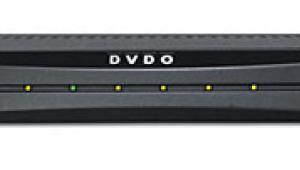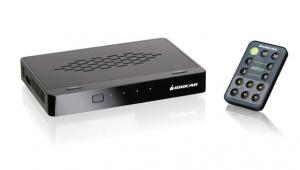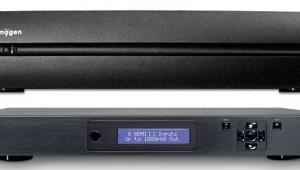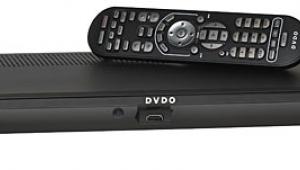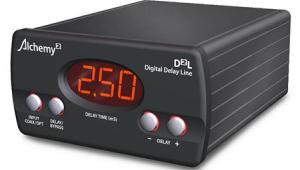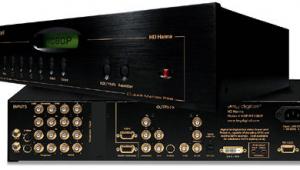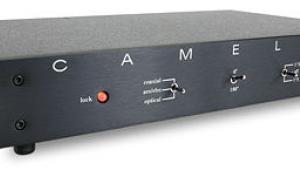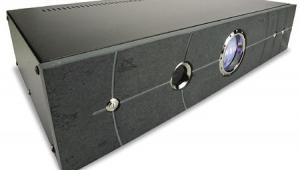Theater Automation Wow Rock+ video processor-scaler

TAW has kept their ears to the rail and their eyes to the computer screen to check the pulses of the various enthusiast forums, and, since introducing the utilitarian but high-performing HD800, they've launched some innovative and timely products. These include the subject of this review—the Rock+ video processor-scaler—and a DVD player with a special digital video output. According to TAW's website, more goodies are on the way this year.
Definitely Not Future-Poof
I'm a fan of modular chassis. With them, as in a personal computer, circuit boards can be replaced as the product is improved, instead of the user's having to junk the whole unit. It seems that TAW's Phil Tuttobene agrees. No one can predict the future, but to the best of his engineering staff's ability, every TAW product is designed to enjoy as long a working life as possible.
When the HD800 CRT projector was TAW's only product, Tuttobene also sold a few makes of reasonably priced video processors. After a good deal of frustration with their operation and reliability, along with some difficulty with those brands' service departments, he decided to create his own; the Rock+ video processor-scaler is the first device to result from that frustration. Making electronics is a big leap for a guy who started by reselling B-stock remanufactured video projectors; when the Rock+ arrived for review, I was skeptical.
Roll In the Rock+
The TAW Rock+ belongs to the small class of true variable-rate scalers. The user can dial in the exact vertical and horizontal resolutions appropriate for the display. Thoughtfully, TAW also lists the more common resolutions and groups them according to display technology—novices should be able to easily find the right output. This is a first, in my experience, and is extremely welcome.
The Rock+'s fine-tuning adjustments are rare in consumer electronics—its color-sync timing features are the most thorough I've seen. Because the NTSC system transmits an image's color and black-and-white information separately, these can sometimes arrive slightly out of time. The Rock+ can correct for less-than-perfect video sources, and provides a separate memory for each input—the adjustment need be made only once. Many users will ignore these controls, but they're invaluable for the more technically savvy.
The internal menu system and printed instructions that come with the Rock+ are extremely thorough and user-friendly, even for the absolute novice. Our multinational friends would do well to study this unit—were they to adopt a similar style of menu and instructions, it might cause an enjoyment revolution in consumer electronics, or, at the very least, relieve much of the confusion our less technical enthusiasts suffer.
Ain't Much to Look At . . .
The Rock+ is a simple black box about the size of a standard desktop computer chassis. The brushed-aluminum faceplate is devoid of buttons; the only features keeping the Rock+ from looking like a miniature obelisk from 2001: A Space Odyssey are the silk-screened TAW and Rock+ logos, and four lights peeking out from the upper left corner. These indicators are labeled Power (it glows green whenever the unit is plugged in and the rear-panel main power switch is toggled on), Run (also green, but lit up only when the Rock+ is awakened from standby mode via the remote control), IR Receive (which flickers yellow each time the Rock+ recognizes a command from the remote), and ByPass (a handy red light that warns that only the HD/computer pass-through is operating). ByPass is crucial—the only button that affects the Rock+ when it's in this mode is the Input selector.
The rear panel sports the aforementioned power switch above a standard IEC power-cord receptacle on the right side, and the standard video and control inputs and outputs on the left. There isn't an RCA jack in the bunch, evidence that TAW is serious about their connections—they use locking BNC connectors for the composite and component inputs and the RGBHV outputs. There's no provision for component outputs, which many hi-def displays require, but adding an RGBHV-to-component transcoder would be the solution—Extron, InLine, and Key Digital make such devices. They'll also be necessary for most hi-def tuners plugged into the pass-through; the Rock+ has no internal transcoding on its inputs either.
An optional Serial Digital Interface (SDI) board is available for $800. This can receive the digital videostream from a DVD player that provides it, avoiding at least one potentially inaccurate D/A and A/D conversion cycle. TAW offers such a player, the DigiLink, for $2799, though Tuttobene was unable to deliver one in time for this review. If possible, we'll provide a "Take 2" at a later date.
- Log in or register to post comments
